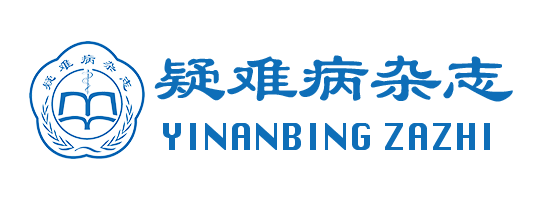-
 A novel NR0B1mutation causes different symptoms in two patients with adrenal hypoplasia congenita
A novel NR0B1mutation causes different symptoms in two patients with adrenal hypoplasia congenita
Author:Yang Ruifei Liu Yuanyuan Li Yajun Li Fanfan Wang Jinyang
keyword:Congenita adrenal hypoplasia ; Nuclear receptor subfamily 0 group B member1 ; Diagnosis ; Treatment
The clinical data of 2 cases of adrenal hypoplasia congenita caused by new mutation of NR0B1 gene were reported and the literature was reviewed.
-
 Research progress of mechanical circulation adjuvant therapy in the treatment of fulminant myocarditis
Research progress of mechanical circulation adjuvant therapy in the treatment of fulminant myocarditis
Author:Xian Liangyan Liu Lu Tang Qian Wu Jianhua
keyword:Fulminant myocarditis ; Mechanical circulation adjuvant therapy ; Research progress
Fulminant myocarditis(FM) is a kind of very serious infectious disease, which can mainly involve the myocardium and cause malignant arrhythmia and acute failure of heart function. The main clinical characteristics include severe disease, rapid onset of severe arrhythmia, heart failure or cardiogenic shock, and there is no specific treatment method for FM. Mechanical circulation support can replace or partially replace the role of heart and(or) heart-lung, which can provide blood perfusion for extra-cardiac tissues to maintain systemic blood circulation and promote recovery of organs function. It has made great progress in the treatment of FM, save time for the subsequent treatment and has become an effective means of FM treatment. Mechanical circulation adjuvant therapy has become matured at abroad. At home, it starts relatively late, with few clinical applications and relatively little management experience. This article aims to analyze the research progress of mechanical circulation adjuvant therapy in the treatment of FM.
-
 Recent advances in the diagnosis and treatment of Fabry disease
Recent advances in the diagnosis and treatment of Fabry disease
Author:Zhou Zilong Long Weiping
keyword:Fabry disease ; Pathogenesis ; Diagnosis ; Treatment
Fabry disease(FD) is an X-linked lysosomal storage disorder caused by mutations of the GLA gene that result in a deficiency of the enzymatic activity of α-galactosidase A and consequent accumulation of glycosphingolipids in body fluids and lysosomes of the cells throughout the body. The lysosomal accumulation of glycosphingolipids, especially globotriaosylceramide(Gb3) and globotriaosylsphingosine(lyso-Gb3, deacylated form), leads to a multisystemic disease with heart disease, progressive renal failure, and strokes, which considerably limits the life expectancy of affected patients. This article reviews the latest diagnosis and treatment of Fabry disease. The etiology, pathogenesis, clinical manifestations, and treatment of Fabry disease are reviewed below.
-
 Research progress on the pathogenesis and treatment methods of neuropathic pain based on collateral disease theory
Research progress on the pathogenesis and treatment methods of neuropathic pain based on collateral disease theory
Author:Wang Tongtong Kang Ning Cheng Lina Su Zhiwei
keyword:Neuropathic pain ; Pathogenesis ; Phlegm stagnation blocking the collateral ; Treatment
Neuropathic pain(NP) is a pain syndrome triggered by damage to the somatosensory system or disease, manifesting as spontaneous pain, nociceptive hypersensitivity and sensory abnormality, and the pain-relieving effect of western medicine is poor and the adverse effects are relatively significant.NP is located in the collaterals, and the pathogenesis of NP is that collaterals are stagnant in qi, phlegm and stagnant, and if they are not open, then it will be painful, and if collaterals are empty, then it is not allowed to be open. The pathogenesis of NP is in line with the theory of collateral disease, and the article analyzes the etiology and treatment of NP based on the theory of collateral disease.
-
 Research progress on the regulation of signaling pathways related to traditional Chinese medicine in the treatment of lupus nephritis
Research progress on the regulation of signaling pathways related to traditional Chinese medicine in the treatment of lupus nephritis
Author:Han Xinlin Zhai Wensheng Ren Xiangge
keyword:Lupus nephritis ; Traditional Chinese medicine ; Signal pathway ; Research progress
Lupus nephritis(LN) is a secondary glomerulonephritis and a severe complication of systemic lupus erythematosus(SLE) affecting the kidneys. To this day, the pathogenesis of LN is not fully understood, but it is believed to be related to genetic factors, immune system abnormalities, inflammatory responses, tissue damage, and cell apoptosis. The treatment for LN is lengthy, with significant drug side effects and a high recurrence rate. Currently, there is an urgent need to study effective Chinese medicine components to improve its efficacy and the quality of life for LN patients. Research has found that in the pathogenesis of LN, signaling pathways such as nuclear factor kappa B, Janus kinase/signal transducers and activators of transcription, mammalian target of rapamycin, Toll-like receptors, and Wnt/β-catenin play a key role. Chinese medicine can exhibit various beneficial effects, including anti-inflammatory, anti-oxidative stress, anti-fibrosis, and inhibition of autophagy in the body, by regulating these signaling pathways. Due to its multi-component and multi-target mechanism of action, it has potential advantages in improving clinical symptoms and quality of life for patients, and has become a focal point of current clinical treatment.

 A novel NR0B1mutation causes different symptoms in two patients with adrenal hypoplasia congenita
A novel NR0B1mutation causes different symptoms in two patients with adrenal hypoplasia congenita
 Research progress of mechanical circulation adjuvant therapy in the treatment of fulminant myocarditis
Research progress of mechanical circulation adjuvant therapy in the treatment of fulminant myocarditis
 Recent advances in the diagnosis and treatment of Fabry disease
Recent advances in the diagnosis and treatment of Fabry disease
 Research progress on the pathogenesis and treatment methods of neuropathic pain based on collateral disease theory
Research progress on the pathogenesis and treatment methods of neuropathic pain based on collateral disease theory
 Research progress on the regulation of signaling pathways related to traditional Chinese medicine in the treatment of lupus nephritis
Research progress on the regulation of signaling pathways related to traditional Chinese medicine in the treatment of lupus nephritis